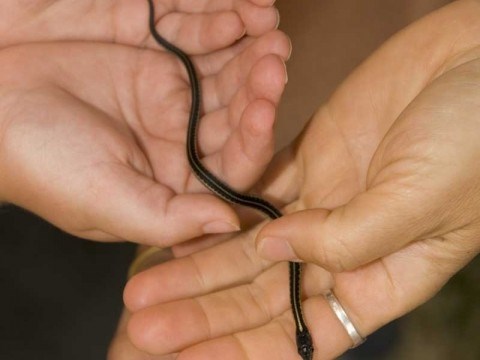The final numbers are still being crunched, but Bob Brett said nearly 40 new species were discovered in Whistler this past weekend during the third annual BioBlitz event.
Standing inside a barn in Edgewater, the BioBlitz organizer said this year's 24-hour race to count as many species as possible was the "best yet," with a total of about 400 species found between noon Aug. 8 and noon Aug. 9.
Among the previously undocumented critters found were a dragonfly, a damselfly and a bunch of new mosses.
"The whole premise of BioBlitz is you get a really high level of specialists in all these fields who have the experience to uncover what is right under our noses," said Brett, biologist and founder of the Whistler Biodiversity Project.
"In the first two years, scientists uncovered 300 new species that hadn't been documented before in Whistler. This year, we didn't find as many new ones, but it still amazes me."
The bad news this year is that scientists found new invasive plants and an invasive moss on the lawn of the hotel this year, said Brett. He added that through the Whistler Biodiversity Project and previous BioBlitzes, other invasive species have already been documented in Whistler, including lichens, mammals, birds, spiders and mushrooms.
Those invasive species are expected products of development, said Brett, adding: "the more we develop, and the more invasive species are in other places, the more we are going to see them here, unfortunately."
On the positive side, though, weather blessed the 40 scientists from across British Columbia who joined forces this weekend to scour forests, alpine, lakes and wetland for as many plants as possible, and rain didn't start pouring until an hour after the BioBlitz officially wrapped up.
Three-fourths of the scientists who attended the 2009 BioBlitz were from outside of Whistler, said Brett, including two from Washington. Three scientists weren't able to make the event because they didn't bring their passports with them when crossing the Canadian-American border.
"There was a woman from Alaska who would have been our farthest flung scientist, but she couldn't make it because she didn't have her passport," said Brett.
Among those who attended was Andy MacKinnon, a professional biologist based in Metchosin, on southern Vancouver Island.
This summer marked the second time MacKinnon has made the trek to Whistler to track down species; the man who has written several books on the plants of Western Canada and the Pacific Northwest also attended last year's BioBlitz event.
"Whistler is just an absolutely fantastic place from the point of view of biodiversity, which is the diversity of species in the ecosystem," said MacKinnon about what drew him back to the Whistler Naturalists' treasure hunt this year.
"You have everything in Whistler. You have the plants, fungi, lichen and animals of the coast, and you have the plants, fungi, lichen and animals of the interior. You have lower and higher elevation. It is probably one of the richest places in all of B.C. for species diversity."
MacKinnon warned, though, that it is important for residents of Whistler to appreciate what an incredibly biodiverse place they live in and to recognize the decisions which could affect that biodiversity.
"I think with the great opportunities you have in Whistler comes certain responsibilities to keep in mind what a rich place this is and how management has to take that into account."
Some of the other scientists who attended this year's event include Mike Toochin, who Brett described as one of the top birders in B.C., along with Denis Knopp and Lee Larkin.
Attendance from the public was also up this year, said Brett, with more than 60 people coming out on Saturday night to listen to a presentation by six bat experts dubbed "Night Critters."
Organizers made sure to have a sample of the live critters scientists were finding on display at their base in Alpha Lake Park the whole time, which further helped engage the public in the biodiversity hunt. For example, people were able to see an alligator lizard for the first time, said Brett, which was great because a lot of people didn't realize there are lizards in Whistler that look so tropical.




